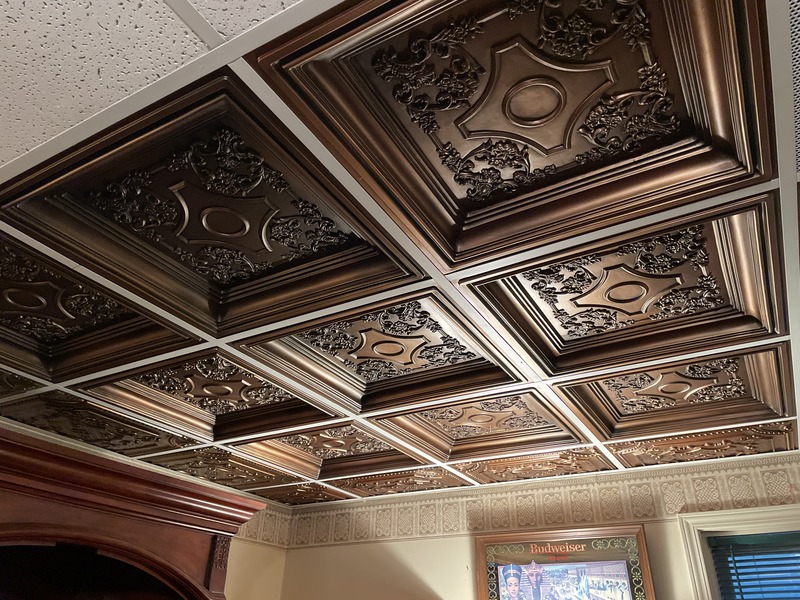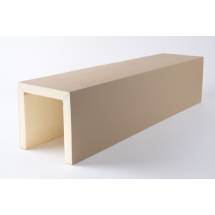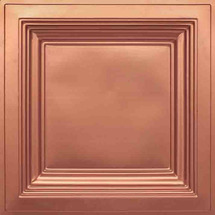Invoke classical elegance with a Coffered Ceiling
Written by Milan Jara on 4th Nov 2024
When looking for clever ways to maximize your home’s potential, it’s not uncommon to become hyper-focused on design elements in your eyeline. Of course, it’s important to ensure your walls, floors, furniture and fixtures all match your central theme and combine to create a cozy and homely atmosphere, but what about the fifth wall that's sitting out of view?
For a surface with so much potential to transform a space, it’s a shame that ceilings often go overlooked. But in many cases, it’s just that people don’t know what to do with them. Should they be painted? Perhaps textured? Maybe they should be hidden behind lights? All fine ideas, but we’re here to discuss a much more exciting way to maximize a space’s potential.
Coffered ceilings are often associated with grand buildings like classical mansions, libraries and concert halls, but what if a modernized version could be used to spruce up your home? Well, that’s entirely possible, and actually a lot easier to pull off than you’d think. Here’s how to revitalize your home and invoke classical elegance with an awe-inspiring coffered ceiling.
What is a coffered ceiling?
A coffered ceiling is an architectural design element consisting of a series of beams laid out across a ceiling in a grid pattern, creating recesses in which decorative ceiling tiles can be installed. The term “coffer” roughly translates to “indentation” from its original Old French origins, so a coffered ceiling is essentially a set of indented panels laid out across a ceiling.
Where can coffered ceilings be found?
The first examples of coffered ceilings were found in ancient Roman and Greek architecture. They were generally fashioned from stone and used to strengthen ceilings in grand buildings like vaults and basilicas, but their ornate designs made them popular with the upper classes.
More modernized versions of coffered ceilings became popular among wealthy homeowners in the 19th and 20th centuries, with cumbersome stone swapped out for wooden beams and tin ceiling tiles. Variations of these types of coffered ceilings remain popular today, but with the aid of modern materials, simple coffered ceilings can be installed in just about any home.
The benefits of coffered ceilings
The main draw to coffered ceilings is their aesthetic appeal, adding a striking sense of depth and character to even the most basic spaces. However, there are actually a few additional benefits homeowners can expect to enjoy by simply choosing to install coffered ceilings.
- Acoustic benefits: The three-dimensional structure of coffered ceilings allows them to absorb and dampen sound waves, with this effect boosted if foam coffered ceiling tiles are also present, helping to create calm and peaceful spaces in modern homes.
- Masking oddities: Coffered ceilings, especially those installed as drop ceilings, can be used to mask unsightly physical infrastructure like electrical cables and ductwork.
- Easy adjustments: The coffered ceiling tiles placed at the center of each indentation can be easily removed and replaced at any time, enabling you to adjust a room’s feel whenever you like without needing to block off and repaint your entire ceiling.
How to install a modern coffered ceiling
Designing and installing a modern coffered ceiling is much easier than you’d think, enabling homeowners to create elegant and awe-inspiring living spaces without any professional help.
You can check out this video guide for an in-depth walkthrough of how to install your own custom coffered ceiling, but we’ve covered the basics below.
- Map out your grid: Measure out the center point of each wall then use a chalk line to visualize a grid pattern on your ceiling. Use masking tape to accentuate the lines and make sure to account for the size of the beams and the dimensions of your tiles.
- Install your beams: Faux-wood beams will make up the borders of your coffered ceilings. These beams can be hung from wooden rails installed along the lines you previously marked out and fixed into place using finish nails. The type of beams you choose is important, as regular beams aren’t cut out for coffered ceilings. Sanded smooth beams are a good choice as they’re easy-to-install and affordable, but they only come in limited sizes. Rustic smooth beams are usually a better option, as they come in a wide range of pre-cut and custom sizes, but they are a bit more expensive.
- Glue up your tiles: Your choice of decorative coffered ceiling tiles can now be glued into place at the center of each indentation. This is where you can get creative, with loads of unique patterned, colored and textured ceiling tiles available to choose from.
- Put up your molding: The installation can now be finished off with sections of crown molding. Simply cut the materials to size and glue them into place between your tiles and your faux-wood beams, and with that, your beautiful coffered ceiling is complete!
Tips for optimizing your coffered ceiling ideas
Now you know how to design and install a simple coffered ceiling, you can start planning out your own bespoke installations. From the types of materials you should look for, to clever ways to create custom designs, here are some tips for optimizing your coffered ceiling ideas.
Glue-up vs drop-in coffered ceiling tiles
Glue-in ceiling tiles can be applied directly to your existing ceiling (as long as the surface is clean and even), making them super easy to install. Drop-in coffered ceiling tiles are a little different. They feature deeper edges and are designed to be hung from a frame suspended below your ceiling, so they’re great if you want to lower your roof or hide unsightly ductwork.
If you already have a standard drop ceiling grid installed in your home, for example in your basement, drop-in ceiling tiles can be used as a direct replacement for existing acoustic tiles. The overlapping edges can be slipped into place as demonstrated here, and grid covers can be added to ensure a uniform finish, allowing for a very simple coffered ceiling installation.
Choosing the perfect ceiling tile designs
For an elegant and traditional installation, ornate faux-tin coffered ceiling tiles can be a great choice. Alternatively, plain-faced faux-tin ceiling tiles can add an interesting accent with a bit more subtlety. You could even choose to paint white coffered ceiling tiles in custom colors to create a bespoke installation that perfectly complements your unique interior design themes.
Molding and coffered ceiling system features
Coffered ceiling systems can be used to add extra definition to your installation, or to create shallow coffered ceilings that produce a less dramatic effect. In a standard coffered ceiling, crown molding fills the gaps between the tiles and the beams, with loads of different options to choose from including hand-painted products and plain materials that you can customize.
Wrapping up
Installing a coffered ceiling can be a surprisingly simple way to add a touch of elegance to your home. If this post has sparked your creativity, feel free to browse our range of coffered ceiling tiles and start planning your new installation.













